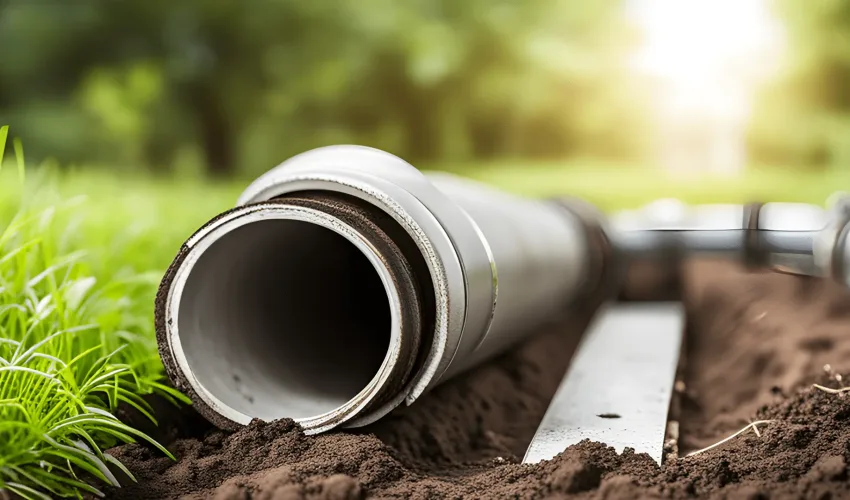French drains are one way that water can be directed away from your home. If they are not functioning properly, you may find yourself facing some serious problems in your basement and in your yard. A clogged French drain will not redirect excess water as it should. This could lead to leaks in the basement, flooding in the basement and yard and property damage, so it is necessary to ensure that it is running freely. You can look for the following signs to determine if your French drain has a clog.
-
Standing Water
The first thing that you can check for is any signs of standing water in your yard. Inspect low lying areas of the lawn that should be flowing towards the French drain. If your drain is clogged, these low-lying areas will be flooded or squishy since they are not being adequately drained. A French drain that is working correctly will keep any low areas of the yard just as dry as the higher areas.
-
Wet Basement
French drains are commonly installed to help prevent water from coming into the basement. Check around your basement walls and floors for any signs of water infiltration. If you can see wet areas, watermarks, cracking, mold, or mildew, then there is a good chance that your French drain is not correctly functioning.
-
Check the Water Level in the Drainage Trench
To check the drainage trench, you can very carefully remove a small section of the gravel. Go gently and slowly to ensure that you do not accidentally damage the pipe underneath. If you can see water buildup around or over the drainpipe then the water is not flowing smoothly through and is most likely clogged.
-
Look at the Termination Point
Water that flows into the drainage pipe should be freely flowing out of the pipe at the termination point. To check this, you can perform a simple test. First, find this point and gently uncover it if it is underground. Spray water using your garden hose over the drainage trench approximately 3 to 6 meters from this point. Wait for a few moments and then see if the water comes flowing out. If the water does not flow out the end of the drainpipe, the French drain is clogged.
French drains should not become easily and frequently clogged so if you notice that this is a regular occurrence, there is possibly a problem with the installation or poor materials were used. In some cases, you may need to have the French drain reinstalled to prevent this problem from happening repeatedly. Being proactive with your French drain can prevent a lot of damage from occurring so don’t ignore them, especially if you suspect it may be becoming clogged. It can be a good idea to have a professional inspect them every couple of years as well. WaterPro Master can help you with all your French drain needs from maintenance and cleaning to new installations!
French drains do not require much regular maintanence although over time they can become clogged due to sediment build up or tree roots. To prevent clogs from occurring, you can clean them out once a year. To do this, excavate the uphill end of the pipe, remove the filter, or cover and send down a large amount of water. You can use a pressure washer to help clear everything out. If the French drain still does not seem to be draining properly, you can use an electric sewer snake to clean out the debris.

